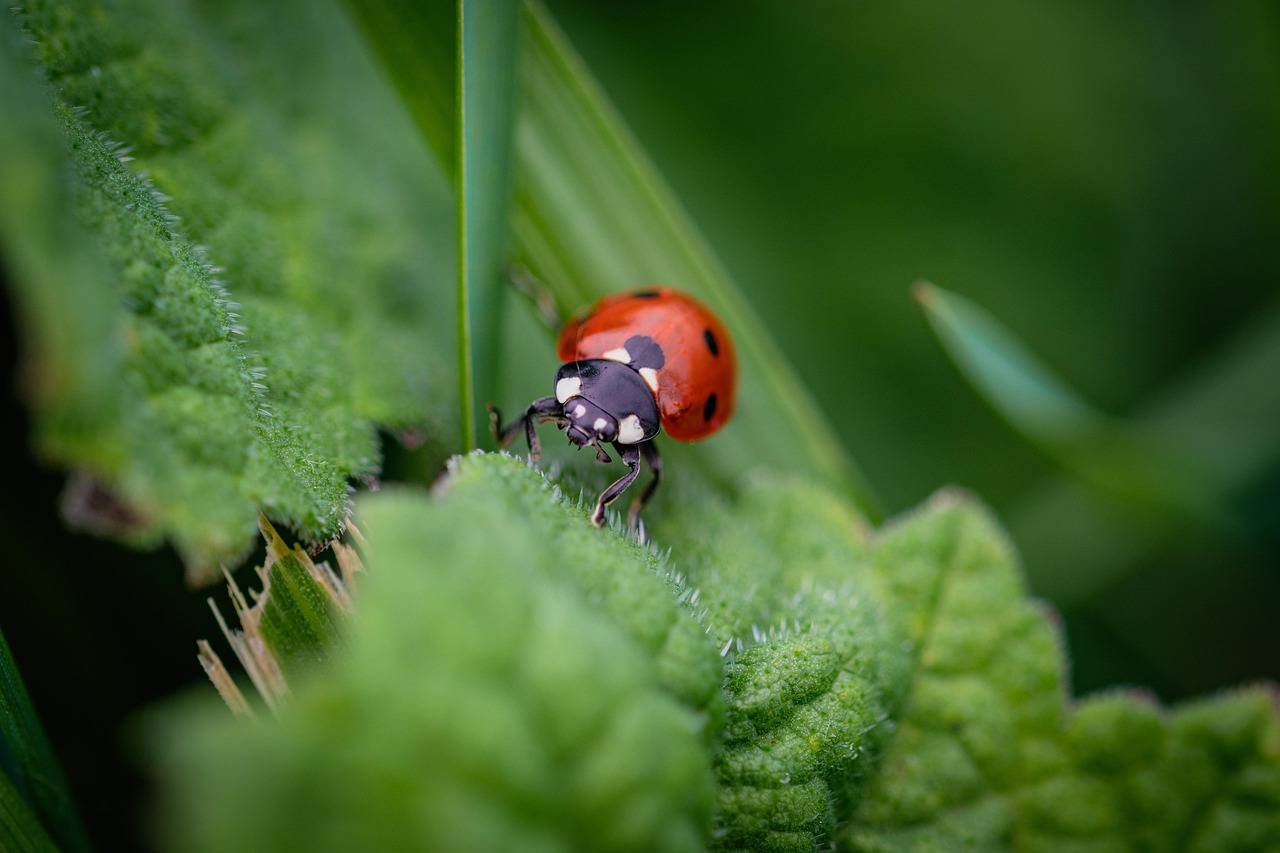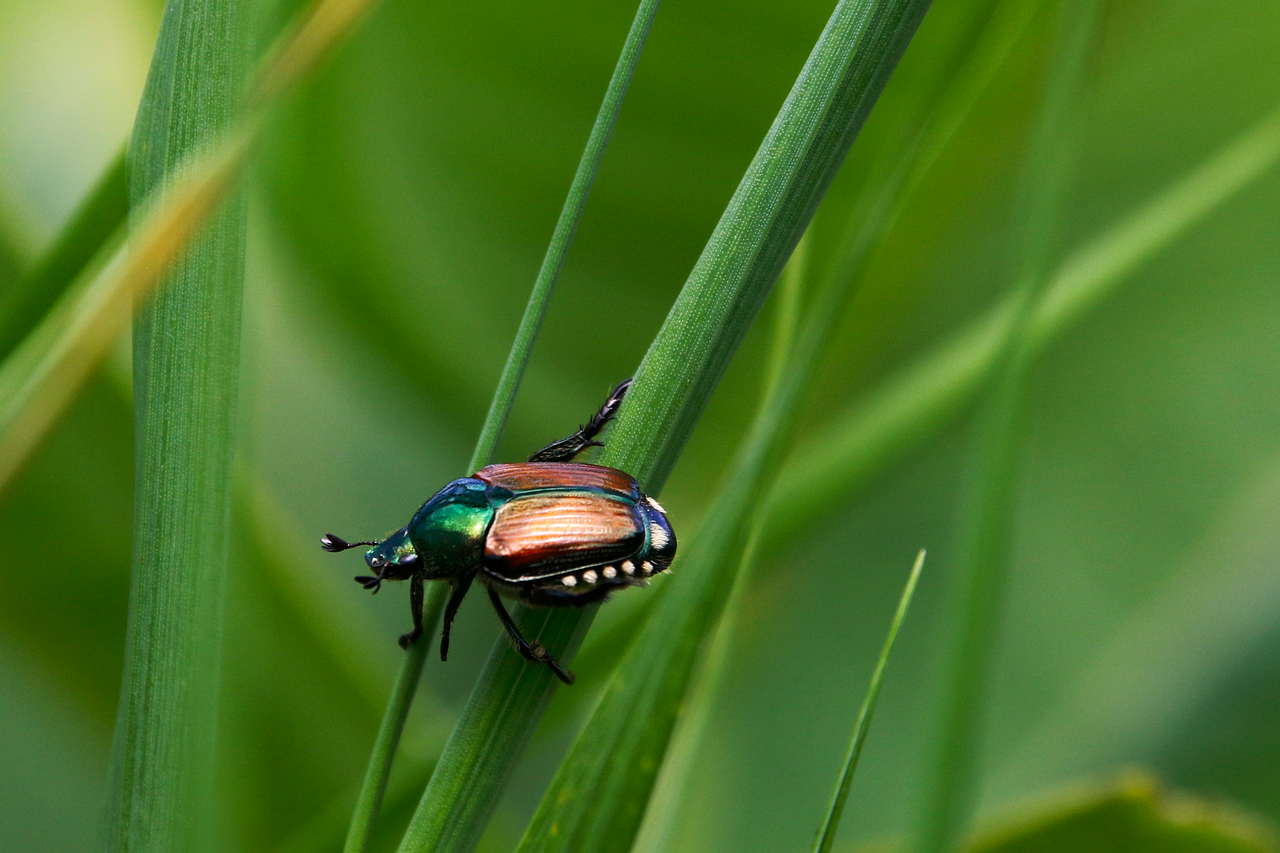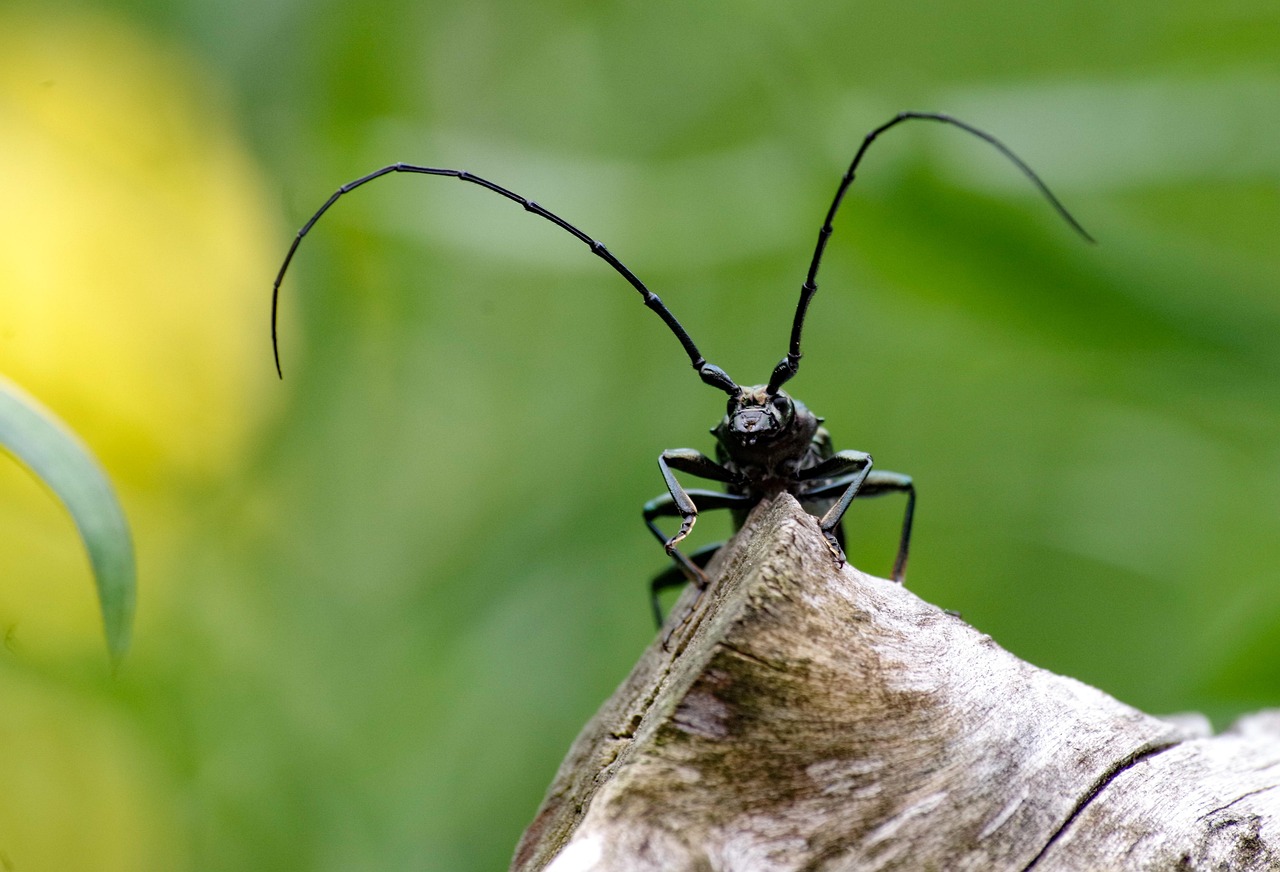Building beetle banks in your garden is an effective way to attract beneficial insects. These structures provide habitat and food for predatory beetles, which help control pest populations and promote a healthier ecosystem. By incorporating native plants and creating suitable environments, you can enhance biodiversity and support ecological balance.
In the world of gardening, the importance of beneficial insects cannot be overstated. They play a crucial role in pest management, pollination, and overall garden health. Among these helpful allies, predatory beetles, such as ladybugs and ground beetles, stand out for their ability to keep harmful insect populations in check. However, to encourage these insects to thrive in your garden, it is essential to create environments that cater to their needs. This is where beetle banks come into play.
Beetle banks are raised areas or strips of land that provide shelter and food for predatory beetles. These structures can be constructed using soil, organic matter, and native plants, which help create a microhabitat that supports a diverse range of beneficial insects. By investing time and resources into building beetle banks, you will not only enhance your garden’s biodiversity but also reduce the reliance on chemical pesticides.
What Are Beetle Banks?

A beetle bank is essentially a habitat designed to attract and support beneficial insects. They typically consist of a mound of soil or compost that is planted with a variety of native vegetation. The purpose of these banks is to offer shelter, food sources, and breeding grounds for predatory beetles and other insects.
One of the primary benefits of beetle banks is their ability to provide a refuge for insects during adverse weather conditions or when food sources are scarce. The elevated structure protects the insects from flooding while the diverse plant life offers nourishment throughout the growing season. This encourages predatory beetles to remain in your garden and actively hunt down pests.
| Feature | Benefit |
|---|---|
| Habitat | Provides shelter for beneficial insects. |
| Diversity of Plants | Offers food sources throughout the season. |
| Soil Structure | Improves drainage and reduces flooding risks. |
To successfully build a beetle bank, consider the following key components:
- Location: Choose a sunny spot in your garden that is protected from strong winds.
- Soil Composition: Use a mix of topsoil, compost, and organic matter to create a mound at least one meter wide.
- Plant Selection: Incorporate a range of native plants that flower at different times to provide continuous food sources.
- Maintenance: Avoid using pesticides near the beetle bank to ensure that beneficial insects can thrive.
Incorporating these elements will create an inviting environment for predatory beetles, enhancing their presence in your garden. A well-constructed beetle bank not only supports these beneficial insects but also contributes to the overall health of your garden ecosystem.
The process of building a beetle bank is not only beneficial for your garden but also an opportunity for you to engage with nature. As you plan and create these habitats, you will learn more about the plants and insects that are integral to your local ecosystem. This hands-on approach fosters a deeper appreciation for biodiversity and encourages sustainable gardening practices.
As you embark on this journey, remember that patience is key. It may take time for the beetles and other beneficial insects to discover and inhabit your newly created banks. However, once established, these banks will serve as a vital resource for maintaining balance in your garden’s ecosystem.
Choosing the Right Location for Your Beetle Bank
The success of your beetle bank heavily relies on its location within your garden. Selecting the right spot not only enhances its effectiveness but also encourages the establishment of beneficial insect populations. Here are some key considerations when choosing a location:
- Sunlight: Select an area that receives ample sunlight for most of the day. Predatory beetles thrive in warm conditions, so a sunny location helps create an optimal habitat.
- Wind Protection: Choose a site that is shielded from strong winds. This can be achieved by positioning the bank near natural barriers such as hedges or fences.
- Proximity to Flowering Plants: Place the beetle bank near flowering plants to ensure a steady food supply for adult beetles. This proximity increases the likelihood of beetles finding the bank.
- Well-Drained Soil: Ensure the chosen area has good drainage. Avoid low-lying spots that may collect water, as excessive moisture can harm the beetles.
Essential Components of a Beetle Bank
Building an effective beetle bank requires careful consideration of its components. Each element plays a significant role in creating a sustainable environment for beneficial insects. Here are essential components to include:
Soil Composition
The soil used in your beetle bank should consist of various materials to ensure proper drainage and nutrition. A mixture of:
- Topsoil: Provides a nutrient-rich base for plant growth.
- Compost: Adds organic matter that enriches the soil and retains moisture.
- Sand or Gravel: Enhances drainage, preventing waterlogging.
This combination creates a suitable environment for both plants and insects, fostering biodiversity.
Plant Selection
Choosing the right plants for your beetle bank is crucial. Native plants are often the best choice due to their adaptability and ability to attract local insects. Consider including a mix of:
- Flowering Plants: These provide nectar and pollen for adult beetles and other beneficial insects.
- Grasses and Sedges: These plants offer shelter and breeding sites for predatory beetles.
- Diverse Growth Habits: Incorporating plants of varying heights creates layers that enhance habitat complexity.
This diversity not only attracts different species of beneficial insects but also supports a balanced ecosystem within your garden.
Maintenance Tips for Your Beetle Bank
Once your beetle bank is established, maintaining it is essential for long-term success. Here are some maintenance tips to keep in mind:
- Avoid Pesticides: Chemical pesticides can harm beneficial insects. Opt for organic alternatives if pest control is necessary.
- Regular Monitoring: Keep an eye on the health of your plants and the presence of beneficial insects. Identifying potential issues early can help prevent larger problems.
- Seasonal Pruning: Trim back overgrown vegetation to promote healthy growth and allow sunlight to reach all areas of the bank.
- Soil Health Checks: Periodically assess the soil composition and add compost or other organic material as needed to maintain fertility.
With consistent maintenance, your beetle bank will flourish, creating an inviting habitat for predatory beetles and other beneficial insects.
Encouraging Biodiversity Beyond Beetle Banks
A beetle bank is just one component of creating a biodiverse garden. To further enhance your garden’s ecosystem, consider implementing additional strategies that support various forms of wildlife:
- Plant Diversity: Incorporate a variety of plants beyond those in your beetle bank. This attracts a broader range of beneficial insects and pollinators.
- Create Water Sources: Small ponds or birdbaths can provide hydration for beneficial insects and other wildlife.
- Add Shelter Structures: Install insect hotels or log piles to offer additional habitats for various insects and small animals.
- Implement Crop Rotation: Rotate crops each season to prevent pest buildup and improve soil health.
By integrating these practices with your beetle bank, you will cultivate a thriving garden ecosystem that supports a diverse array of life, contributing to its resilience and productivity.

Understanding Beneficial Insects

To effectively attract beneficial insects to your garden, it is essential to understand the different types of beneficial insects and their specific roles within the ecosystem. By knowing what these insects do, you can create a more targeted approach to fostering their presence.
Types of Beneficial Insects
Beneficial insects can be broadly categorized into three main groups: predators, parasitoids, and pollinators. Each group plays a unique role in maintaining ecological balance.
- Predators: These insects actively hunt and feed on pest species. Examples include ladybugs, lacewings, and predatory beetles. They help control pest populations and reduce the need for chemical pesticides.
- Parasitoids: These insects lay their eggs inside or on the bodies of other pests. The larvae then feed on the host, ultimately killing it. Common parasitoids include certain types of wasps that target aphids and caterpillars.
- Pollinators: Pollinators, such as bees and butterflies, are crucial for the reproduction of many plants. They transfer pollen from one flower to another, facilitating fertilization and fruit production.
The Role of Beetles in Your Garden
Among the various beneficial insects, beetles hold a significant place. They can be both predators and decomposers, contributing to your garden’s health in multiple ways:
- Pest Control: Predatory beetles, such as ground beetles and rove beetles, consume a variety of pests including slugs, aphids, and caterpillars.
- Soil Aeration: Some beetles burrow into the soil, helping to aerate it. This enhances water infiltration and root growth, benefiting your plants.
- Decomposition: Beetles play a crucial role in breaking down organic matter. This process enriches the soil with nutrients, promoting plant health.
Creating a Welcoming Environment for Beneficial Insects
To effectively attract beneficial insects like beetles, it is vital to create an environment that meets their needs. Here are strategies to enhance their habitat:
Planting for Diversity
Diversity in plant selection is essential for attracting a wide range of beneficial insects. Consider planting a mix of:
- Nectar-Rich Flowers: Choose flowers that bloom at different times throughout the growing season to provide continuous food sources.
- Host Plants: Include plants that serve as food sources for larvae of specific beneficial insects. For example, dill and fennel attract beneficial wasps.
- Diverse Heights: Use plants of varying heights to create shelter and nesting sites for insects.
Providing Shelter
In addition to food sources, beneficial insects require shelter to thrive. Here are some ways to provide suitable habitats:
- Mulch and Ground Cover: Use organic mulch or ground cover plants to create moisture-retaining habitats for beetles and other insects.
- Brush Piles: Create brush piles using twigs and branches. These piles offer shelter for ground beetles and other beneficial species.
- Insect Hotels: Construct insect hotels with hollow stems or small wooden blocks to provide nesting sites for solitary bees and other insects.
The Importance of Seasonal Changes

The changing seasons significantly impact the presence of beneficial insects in your garden. Understanding these changes can help you tailor your gardening practices accordingly.
Spring: Awakening Life
As temperatures rise in spring, many beneficial insects emerge from their winter dormancy. It is essential to ensure that food sources are available early in the season. Here are some actions to take:
- Early Bloomers: Plant early-blooming flowers like crocuses and snowdrops to provide nectar as soon as insects become active.
- Avoid Early Pesticides: Delay any pesticide applications during this period to protect newly emerging beneficial populations.
Summer: Peak Activity
Summer brings peak activity for many beneficial insects. To sustain their populations during this time:
- Diverse Planting: Continue to plant flowers that bloom throughout summer for consistent food availability.
- Create Moisture Zones: Ensure there are moist areas in your garden where beneficial insects can hydrate.
Autumn: Preparing for Winter
As autumn approaches, prepare your garden for the winter months while still supporting beneficial insects:
- Leave Plant Stems: Allow some plant stems to remain standing over winter. They provide shelter for overwintering insects.
- Add Organic Matter: Incorporate compost or organic material into the soil to enhance its health for the following growing season.
By understanding seasonal changes and implementing these practices, you can create a thriving environment that supports beneficial insects throughout the year.
Integrating Beetle Banks with Other Sustainable Practices
Building beetle banks is just one aspect of creating a sustainable garden that attracts beneficial insects. To maximize the effectiveness of your beetle banks, consider integrating other sustainable gardening practices. These methods can further enhance biodiversity and create a more resilient ecosystem in your garden.
Companion Planting
Companion planting involves growing different plants in proximity for mutual benefits. This practice can be an effective way to attract beneficial insects while deterring pests. Here are some companion planting strategies:
- Planting Flowers Among Vegetables: Incorporate flowering plants like marigolds or nasturtiums among your vegetables. These flowers attract pollinators and predatory insects, enhancing pest control.
- Utilizing Aromatic Herbs: Herbs such as basil, mint, and rosemary can repel certain pests while attracting beneficial insects like bees and hoverflies.
- Strategic Pairing: Pair plants with complementary growth habits. For example, tall plants like sunflowers can provide shade for smaller plants that thrive in cooler conditions.
Organic Gardening Practices
Adopting organic gardening methods promotes a healthier environment for beneficial insects. By minimizing chemical inputs, you create a safer habitat. Some key practices include:
- Natural Pest Control: Utilize natural predators such as ladybugs and lacewings instead of chemical pesticides to manage pest populations.
- Composting: Create compost to enrich soil health. Healthy soil leads to robust plant growth, which in turn supports beneficial insects.
- Mulching: Use organic mulch to retain moisture, reduce weeds, and provide habitat for beneficial organisms.
Regular Observation and Adaptation
Gardening is an evolving practice that requires regular observation and adaptability. Pay attention to the dynamics of your garden and make adjustments as needed:
- Monitor Beneficial Insect Populations: Keep track of the presence of beneficial insects in your garden. If you notice a decline, consider adjusting plant selections or habitat features.
- Assess Plant Health: Regularly inspect plant health and growth patterns. This will help you identify any issues early on, allowing for timely interventions.
- Adapt Plant Choices: Be open to changing plant varieties based on what works best in your specific environment. Some plants may perform better than others, attracting more beneficial insects.
Final Thoughts
Building beetle banks is a powerful way to attract beneficial insects to your garden and create a balanced ecosystem. By providing suitable habitats and food sources, you can encourage predatory beetles and other beneficial insects to take up residence in your garden. This not only helps manage pest populations but also promotes overall garden health.
As you implement and maintain your beetle banks, remember the importance of diversity—both in plant selection and in gardening practices. By integrating companion planting, organic methods, and regular monitoring into your gardening routine, you create a thriving environment that supports a wide variety of beneficial insects.
Your commitment to fostering biodiversity will yield rewards not only in terms of a healthier garden but also in the pleasure of engaging with nature and witnessing the intricate relationships between plants and insects. Together, these efforts contribute to a more sustainable approach to gardening that benefits both you and the environment.
In conclusion, the journey of building beetle banks and attracting beneficial insects is not just about pest control; it’s about nurturing an ecosystem that supports life in all its forms. With patience, knowledge, and dedication, you can create a vibrant garden that flourishes with biodiversity.
